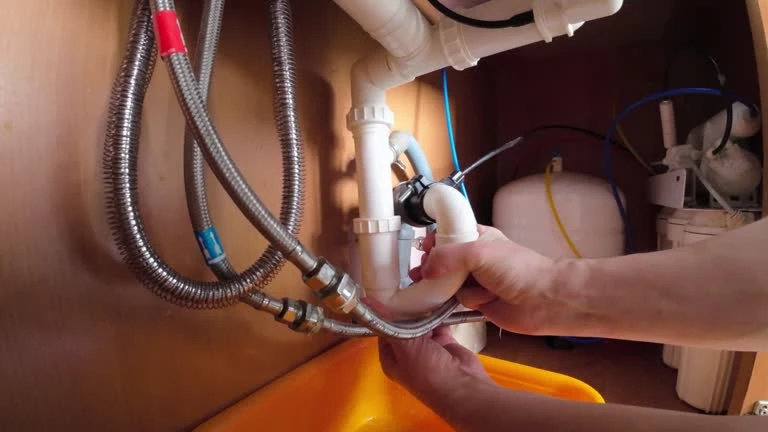Introduction to Control Valve
Control valves regulate fluid flow in hydraulic systems. They direct pressure to different components, ensuring precise movement. These valves help manage force, speed, and direction. Without them, hydraulic machines would lose efficiency. They ensure stability and prevent damage from excessive pressure. Understanding control valves helps in selecting and maintaining the right components. These valves play a key role in industrial automation, heavy machinery, and mobile equipment. Their correct functioning improves overall productivity and machine lifespan.
Types of Control Valve
Different hydraulic systems require specific control valves. Directional control valves guide fluid to various parts. Pressure control valves maintain system stability. Flow control valves regulate speed. Proportional valves offer precise adjustments. Each type serves a unique purpose. For example, relief valves protect systems from excessive pressure. Check valves prevent backflow, ensuring unidirectional movement. Needle valves provide fine flow control in sensitive applications. Servo valves offer advanced control for precision movements. Choosing the correct valve ensures optimal performance and prevents system failure.
How Control Valve Work
Control valves operate using spools or poppets. These components open or close passages for fluid flow. Electrical, mechanical, or hydraulic signals control them. A solenoid-operated valve, for instance, uses an electric coil. When energized, it moves the spool, changing flow direction. Pilot-operated valves use fluid pressure for movement. Proportional valves adjust flow based on electrical input. Servo valves use feedback loops for accurate motion control. Understanding these mechanisms aids in troubleshooting and repairs. Choosing the right valve type depends on system demands and required control precision.
Components of a Control Valve
A control valve consists of a body, actuator, and control mechanism. The body houses internal components. The actuator moves the spool or poppet. Control mechanisms, such as solenoids or springs, determine operation. Seals and gaskets prevent leakage. Ports connect to hydraulic lines. Filters prevent contamination from affecting performance. Internal springs help maintain valve stability. Advanced valves feature electronic sensors for real-time monitoring. Each component plays a vital role. Damage to any part can cause performance issues. Proper installation and regular maintenance ensure long-term reliability.
Common Issues and Solutions
Control valves can experience leakage, clogging, or sluggish movement. Contaminated fluid causes blockages. Worn-out seals lead to leaks. A faulty actuator results in improper operation. Regular maintenance prevents these issues. Cleaning filters removes debris. Checking seals ensures no leaks. Proper fluid selection improves valve longevity. Addressing problems early avoids costly repairs. Excessive heat can affect valve efficiency, requiring cooling solutions. Low-pressure conditions reduce valve responsiveness. Monitoring performance indicators helps detect potential failures. Understanding failure symptoms aids in quick problem resolution.
Importance of Control Valve in Efficiency
Well-maintained control valves improve hydraulic efficiency. They reduce energy consumption and enhance machine performance. A malfunctioning valve increases wear on other components. Regular inspections keep systems running smoothly. Upgrading to modern valves enhances control precision. Proper valve selection optimizes system output. Investing in quality valves minimizes downtime and repair costs. Advanced valve technologies, such as electro-hydraulic and digital control valves, improve response times. Systems using high-precision control valves achieve smoother operation and increased safety. Improved hydraulic efficiency translates into reduced operational costs and longer machine life.
Selecting the Right Control Valve
Choosing a control valve requires considering pressure, flow rate, and application. Industrial systems need high-pressure valves. Mobile equipment benefits from compact designs. Material selection affects durability. Steel valves handle extreme conditions. Aluminum valves are lightweight. Plastic valves resist corrosion in chemical environments. Compatibility with system requirements ensures reliability. Consulting experts helps in making informed decisions. Selecting valves with built-in diagnostic features simplifies maintenance. High-performance applications require valves with superior sealing and flow control characteristics. Evaluating system pressure drops and efficiency losses ensures the right selection.
Conclusion
Control valves are essential for hydraulic systems. They regulate fluid movement, ensuring smooth operation. Different types serve specific functions. Understanding their mechanisms helps in troubleshooting. Regular maintenance prevents failures. Selecting the right valve enhances efficiency. Investing in quality components extends system lifespan. Proper care ensures optimal hydraulic performance in various applications. The role of control valves in industrial automation and heavy machinery is indispensable. Future advancements in smart control valves will further improve efficiency, monitoring, and automation. Prioritizing valve maintenance and upgrades enhances overall hydraulic system performance and longevity.
IFAN Products international standards
IFAN products strictly adhere to a comprehensive range of international standards, encompassing ISO 15874, EN 15874, ASTM F2389, DIN 8077/8078, GB/T 18742, NBR 15884, ISO 15494, EN ISO 15494, GB/T 19472, NBR 15494, ASTM 2846 (501), DIN 8079/8080 (502), ASTM F441/F441M SCH80 (503), DIN (504), DIN (505), GB/T 18993, AS/NZS 1477, CSA B137.6, NSF/ANSI 14, TIS 17-2532/1131-2535, BS 3505, BS 4346 (801), ASTM D1785 SCH40 (802), ASTM D1785 SCH80 (803), DIN (804), GB (805), GB (806), GB(901), DWV(902), ASTM D2665 (903), along with ASTM D2241, D2665, D2729, and F441/F441M series, ISO 1452, EN ISO 1452, DIN 8061/8062, GB/T 10002, AS/NZS 1477, JIS K6741, CSA B137.3, and other national and industry norms.
Connect
IFAN is a Chinese manufacturer of plastic pipes, fittings and valves with 30 years of experience. If you are interest in IFAN copper fittings, copper valves, plastic pipes and fittings, please contact us. IFAN offers you a variety of standard pipes to meet your specific needs. Click below to learn more about IFAN’s wide range of affordable and cost-effective valve products and piping system related products.
We will reply your email or fax within 24 hours.
You can call us at any time if there is any question on our production.
For more information,pls visit our webside https://waterpipefitting.com/
Pls Mailto: [email protected]
Whatsapp: +8615088288323














Recent Comments